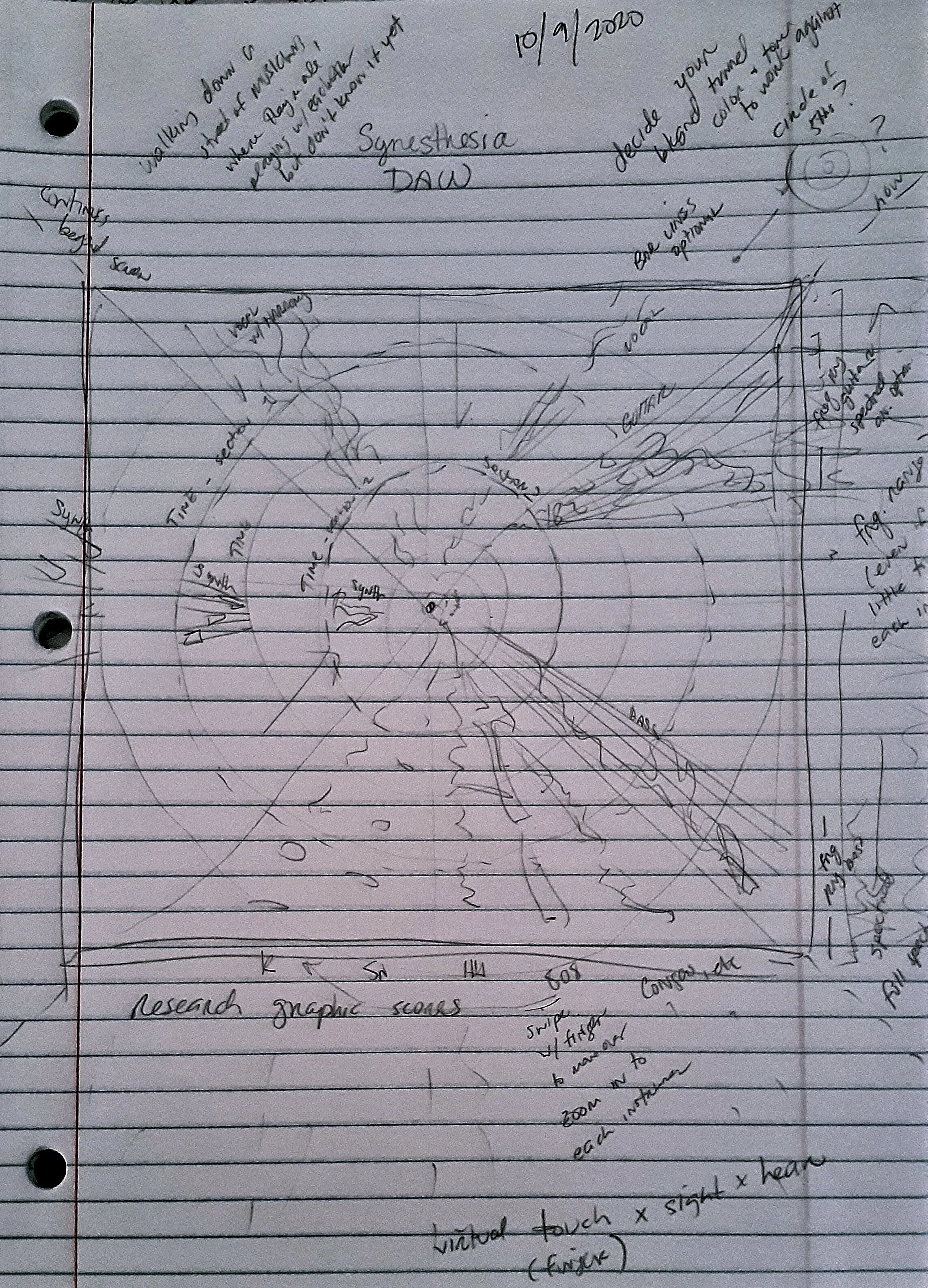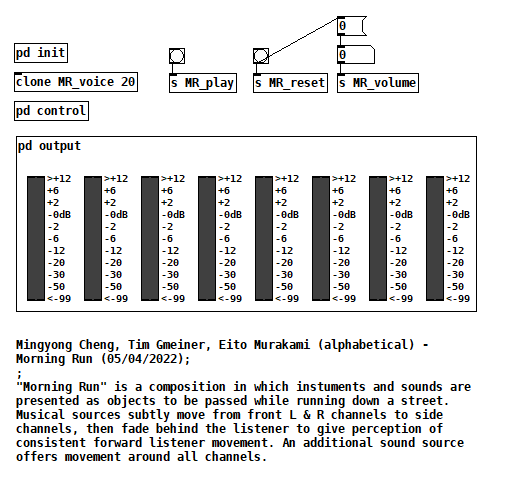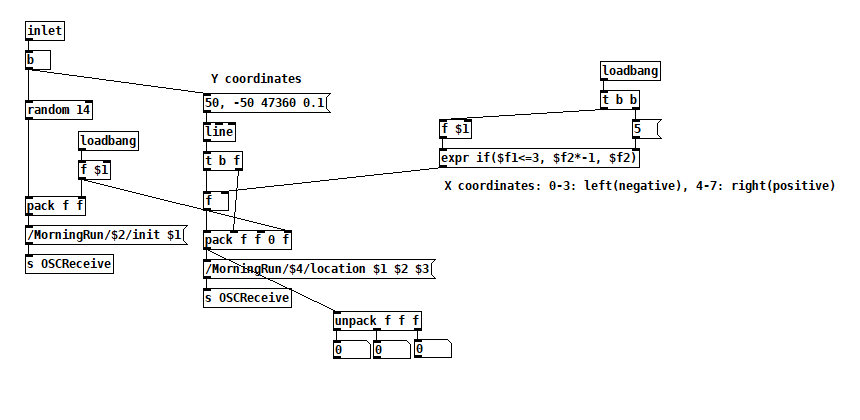“Morning Run” (2022)
Timothy “Ill Poetic” Gmeiner - creative director, composer and graphic score artist | Eito Murakami - sound spatialization development | Mingyong Cheng - visual artist
About: “Morning Run” is a song and accompanying graphic score inspired by my experience with sight & sound synesthesia. This project acts as proof-of-concept for 6-DOF AR/VR Digital Audio Workstation (DAW) development. Progress from the execution of various iterations of “Pigments of Imagination” as well as further studies in digital audio processing, AR/VR/MR/XR, programming and spatial audio are designed to prepare this idea for proper implementation.
Artist Statement / Relation to Theme: My synthesis as a career music producer entering the VR space has incited me to explore the visual, spatial and linear aspects of what it means to move through music in a virtual environment. “Morning Run” probes this fascination by bridging the VR experience of “Pigments of Imagination” (above) toward interactive AR/VR music experience and production. This allows the user to turn their environment into a digital audio workstation and create an art-music synthesis of color, shape and sound with their fingertips.
Logistics - Audio: This project captures field recordings of neighborhood sounds taken on various morning runs. Music was composed around the chopped and processed sounds to create a full composition.
Logistics - Graphic Score: A graphic score was then cultivated from the results of this composition. The images below are designed to simulate the multisensory convergence of synesthesia placed into a neighborhood environment from three perspective: left-to-right view, top view and first-person horizon view.
The left-to-right view (pictured above) shows the A and B sections of the composition with each block representing two measures. The pattern of percussion peppers the street, the bassline sits in the guard-rail and the Rhodes keys flesh off the guard-rail with additional chords sifting through the building. Sprinkles of loose keys and birds fill the sky.
The top view (pictured above) takes the colors of each block in the left-to-right view and paints them down streets I’ve run, acting as the overall form of the piece.
The first-person horizon view (pictured above) re-imagines music creation and production as a 3-dimensional street to walk down and create in. The graphic score views music not left-to-right, but as a series of ongoing sounds that exist past, present and future. In this example, measures of time are counted moving toward the horizon line, frequency is measured along the Y Axis. Each element of the song (kick, snare, keys, vocals, etc) streaks toward the center-point within its own sub-section. The colors are informed by the frequency of the instrument and are meant to interact loosely with the environment.
TBD: VBAP Spatialization approach and application, Touch Designer real-time generative visuals.
Contact: Timothy Gmeiner: tgmeiner@ucsd.edu | Eito Murakami: eitom@stanford.edu | Mingyong Cheng m2cheng@ucsd.edu









